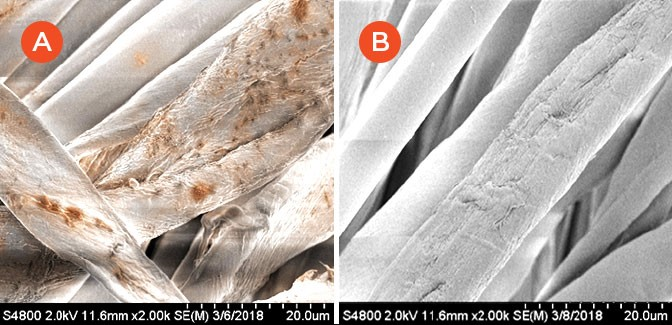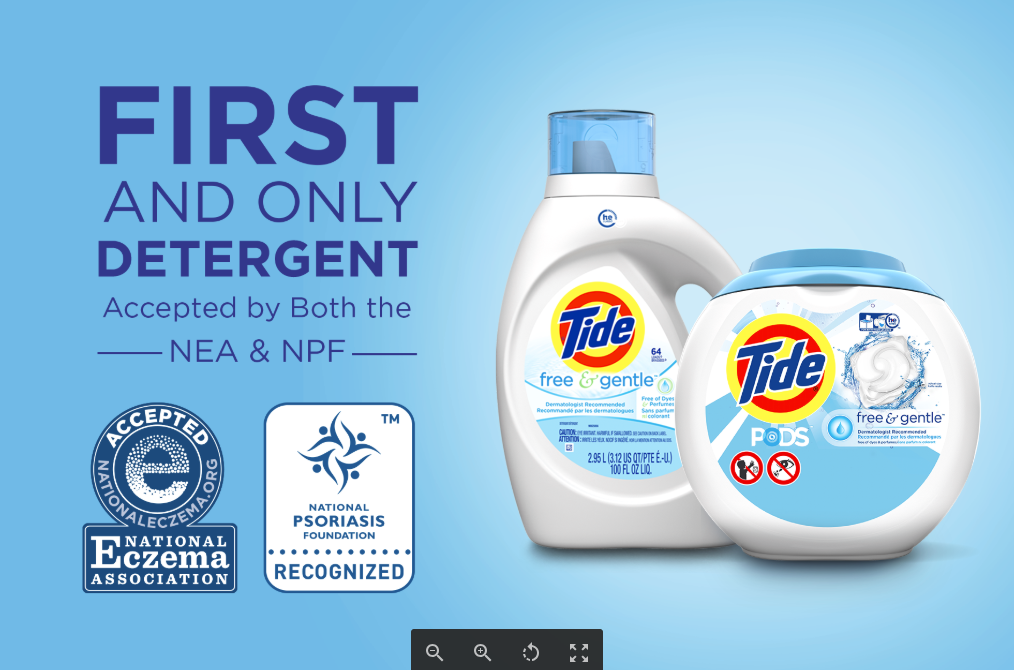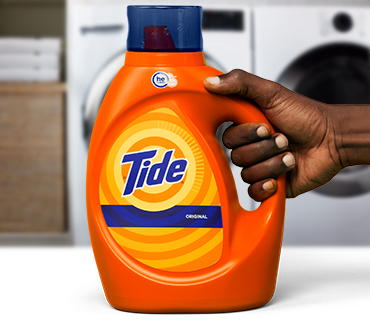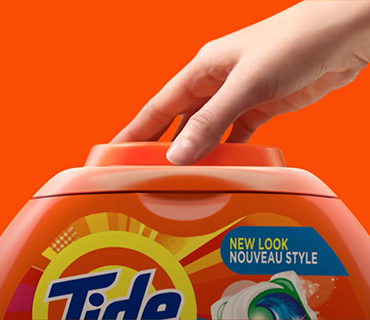How to Care for Sensitive Skin
Whether you experience seasonal skin sensitivities or have year-round, persistent issues, having sensitive skin requires some extra care and protection, even in the laundry room. In the U.S., 45 percent of adults have either “sensitive” or “very sensitive” skin¹. People with sensitive skin are especially susceptible to detergent allergy, so it is even more important that they take extra care of their clothes and other items that come in regular contact with skin, like clothing, sheets and towels. For many, that extra care includes using a detergent free of dyes and perfumes.
Laundry Detergent for Sensitive Skin
The goal of laundry is simple – to clean our clothes and other items. However, for those with sensitive skin, achieving “clean” may not always be a straightforward task. Have you ever thought you are sacrificing cleaning power when using some dye-free and perfume-free laundry detergents? It’s important to know that not all of these detergents have the same cleaning power.
Why does cleaning power matter? Some difficult-to-remove stains, like body soil, which includes body oils, skin flakes and sweat, can be hard to see when it doesn’t leave an obvious residue behind, and that potentially irritating residue builds up and remains in contact with your sensitive skin. That is why it is important to choose a detergent that provides effective cleaning, while remaining gentle on skin.
Scanning electron microscope (SEM) images below show polycotton fabrics washed separately using two different detergents, A and B. More soil residues remain on clothing fibers washed with the leading dye- and perfume-free detergent A (left) than with Tide Free & Gentle detergent B (right).

*Magnification 2,000x. Images have been colorized. Fabrics went through eight wash cycles in soiled conditions.
Tide as a Leader in Laundry for Sensitive Skin
Tide Free & Gentle Liquid Laundry Detergent and Tide PODS® Free and Gentle Laundry Detergent are specifically designed to provide effective cleaning while being gentle on skin. They are also recognized by both the National Eczema Association (NEA) and the National Psoriasis Foundation (NPF)* and have received Seal of Recognition from the NPF and Seal of Acceptance™ from the NEA.
The NPF’s Seal of Recognition highlights over-the-counter products that are recognized to help ease irritation for those living with psoriasis and psoriatic arthritis or those with sensitive skin or limited mobility.
The NEA has also provided Tide Free & Gentle with the Seal of Acceptance™ that recognizes it as an exceptional detergent for eczema and other types of sensitive skin.
Tide is proud to have met the rigorous qualification standards for these seals and to deliver the clean you expect while being gentle on sensitive skin.

In addition to Tide Free & Gentle, Tide also offers a whole line of hypoallergenic laundry detergents designed especially for people with sensitive skin. View all of Tide’s detergents for sensitive skin here.
Additional Tips to Help Manage Sensitive Skin
General
Limit bath and shower times. Bathing longer than 10 minutes can dry out your skin. Also, use warm water, rather than hot, to preserve the natural oils in your skin.²
Use a gentle cleanser. Look for either a mild, fragrance-free soap or a soap substitute that moisturizes as it cleans.²
Moisturize right after bathing. Apply a moisturizer while your skin is still damp to help lock in moisture.²
Laundry
Choose hypoallergenic laundry products. Look for detergents, fabric softeners, and dryer sheets that are dye and fragrance free and that are formulated for sensitive skin.³
Wash new items before using. New clothing may sometimes not be as clean as you’d like. Always wash new clothing, bedding, and cloth napkins before using them to remove any residue the items may have acquired during the manufacturing process or while in the store before purchase.³
Try a liquid fabric conditioner. Clinical studies have shown that clothes treated with a liquid fabric conditioner can provide less friction against sensitive skin⁴
Measure detergent correctly. To get the best cleaning results, use the correct amount of detergent as recommended on the package label for the size of your laundry load.
Misery, L., Sibaud, V., Merial-Kieny, C., and Taieb, C. ‘Sensitive skin in the American population: Prevalence, clinical data, and role of the dermatologist.' International Journal of Dermatology. 2011;50:961-967.
Dry Skin: Tips for Managing. https://www.aad.org/public/diseases/dry-sweaty-skin/dry-skin#tips (Accessed November 8, 2018)
National Eczema Association. Laundry Care Tips for People with Eczema and Sensitive Skin. https://nationaleczema.org/laundry-care-for-people-eczema/ (Accessed November 6, 2018)
Pierard, G.E. et al. ‘Effects of softened and unsoftened fabrics on sensitive skin.’ Contact Dermatitis, 1994; 30:286–291.






